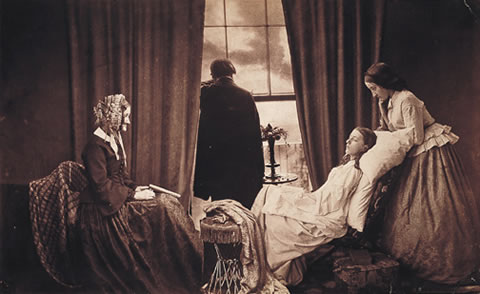Photo by: Barton Silvermen
Wireless transmission has allowed photojournalists to provide us with their photo-journalistic images almost as their happening. They are no longer spending time in dark rooms processing photos, they have more time out in the field. The ability for a photojournalist to literally send a photo instantly to their editors virtually through the air, has not only made their jobs easier but have also made us more satisfied. There is nothing humans hate more than waiting. As stated in the article by Mario Aguilar, “The second a photographer fires the shutter on a camera, the resulting image—a high quality JPEG, not an uncompressed RAW file—is transported by Ethernet to Getty's central editing office in about 1.5 seconds…Once the last editor is done, the image is blasted to the world. It takes about 90 seconds for the images to travel over redundant 100 Mbit/s dedicated lines to Getty's data servers in The United States”. Wireless transmission has also given photojournalists the freedom to shoot anywhere without having USB cables hanging around.
When seeing the process involved in transmitting a photo using wireless capabilities versus how a photo taken with 35 mm color film, the most obvious difference is time. When transmitting photos to another source through wireless means, the image is sent within seconds whereas transmitting via a telephone line could take minutes, and if sending internationally up to an hour. As Chris Wilkins states, “A fourth case contained a manual typewriter and adhesive-backed paper to affix captions to the transmission prints, and a fifth case housed an analog photo transmitter for sending the photos”. “…transmission times were painfully long using an analog drum transmitter, such as UPI’s 16-S transmitter, shown above. The photo spun on a drum while a laser moved slowly across the print producing an audible analog signal consisting of beeps. If you were lucky enough to get a perfect telephone line for sending the picture, one color photo took a minimum of 26 minutes to transmit. Sending internationally took twice as long, sometimes up to an hour per photo”. Not only are there differences in how long a photo could be sent, the amount of equipment needed to transmit the photo also differs. In the digital era, everything needed from capturing a photo-journalistic image to sending it could all fit in a back pack. Before, when using 35 mm color film a lot of equipment was needed and could be very tiresome to the journalist.
When seeing the process involved in transmitting a photo using wireless capabilities versus how a photo taken with 35 mm color film, the most obvious difference is time. When transmitting photos to another source through wireless means, the image is sent within seconds whereas transmitting via a telephone line could take minutes, and if sending internationally up to an hour. As Chris Wilkins states, “A fourth case contained a manual typewriter and adhesive-backed paper to affix captions to the transmission prints, and a fifth case housed an analog photo transmitter for sending the photos”. “…transmission times were painfully long using an analog drum transmitter, such as UPI’s 16-S transmitter, shown above. The photo spun on a drum while a laser moved slowly across the print producing an audible analog signal consisting of beeps. If you were lucky enough to get a perfect telephone line for sending the picture, one color photo took a minimum of 26 minutes to transmit. Sending internationally took twice as long, sometimes up to an hour per photo”. Not only are there differences in how long a photo could be sent, the amount of equipment needed to transmit the photo also differs. In the digital era, everything needed from capturing a photo-journalistic image to sending it could all fit in a back pack. Before, when using 35 mm color film a lot of equipment was needed and could be very tiresome to the journalist.
Image source: http://www.telegraph.co.uk/culture/film/filmreviews/10973340/Finding-Vivian-Maier-review-fascinating.html
One of the issues using film versus digital devices was getting the photos to their destination in time to be published. Before digital cameras and wireless transmission, couriers were needed to collect the films from the photojournalist and carry them to their destination wherever it may be, and many years ago that could take days. As stated by John Morris, “Our only hope to meet the deadline was to send original prints and negatives, as many as possible, in a pouch that would leave Grosvenor Square by motorcycle courier The courier would take it to a twin-engine plane standing by at an airdrome near London. At Prestwick, Scotland, the base for transatlantic flights, the pouch would be transferred to a larger plane. After one or two fuel stops, it would arrive in Washington, D.C., and our pictures would be hand-carried to New York on Saturday”. The use of wireless transmission and digital photos has eliminated that timely process completely.










